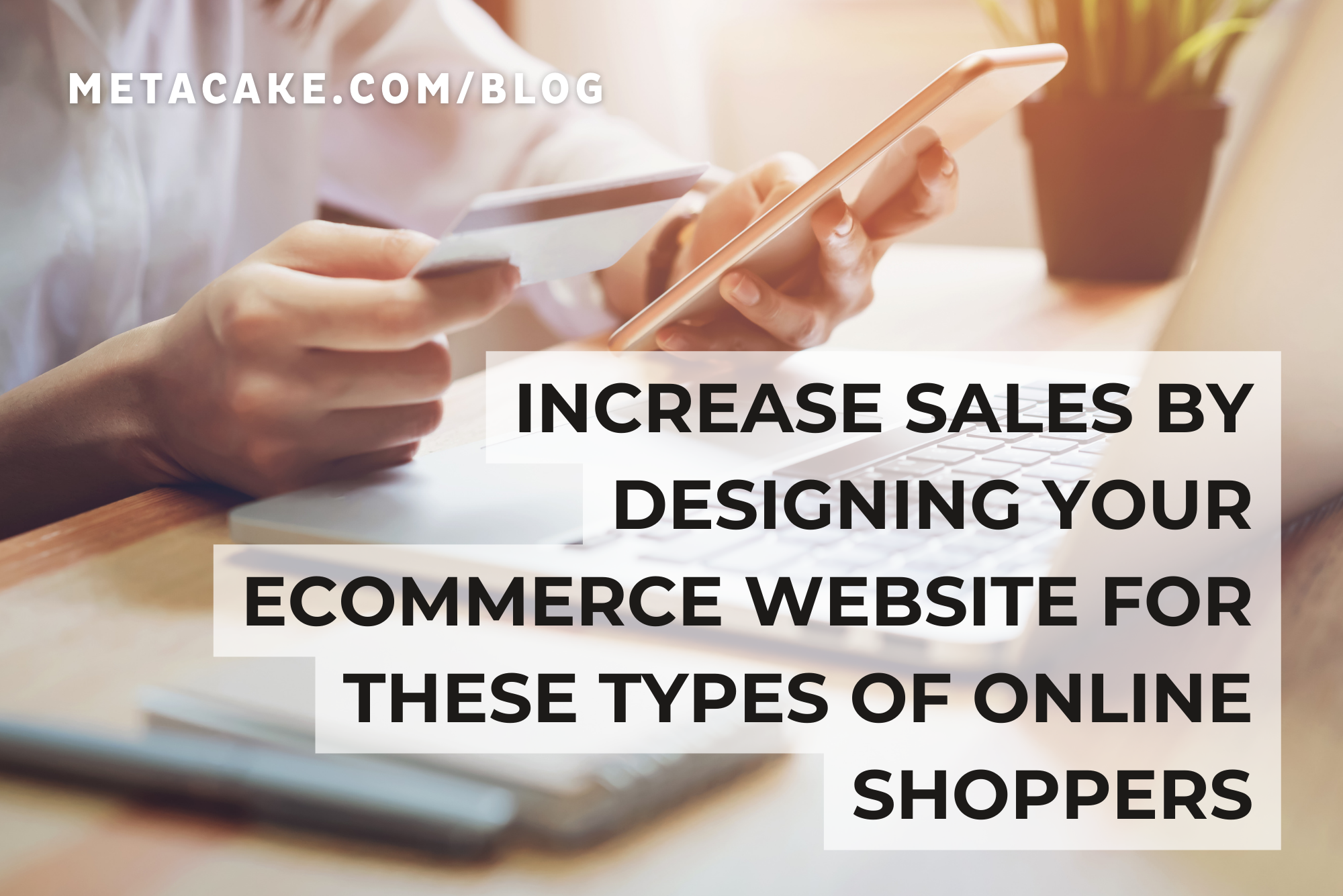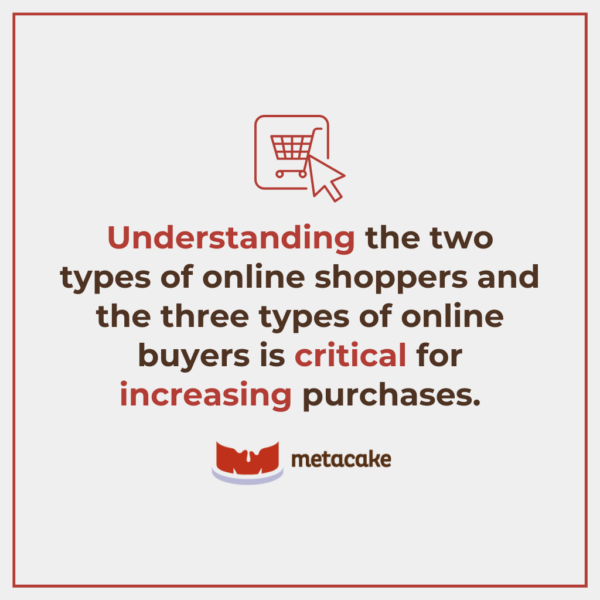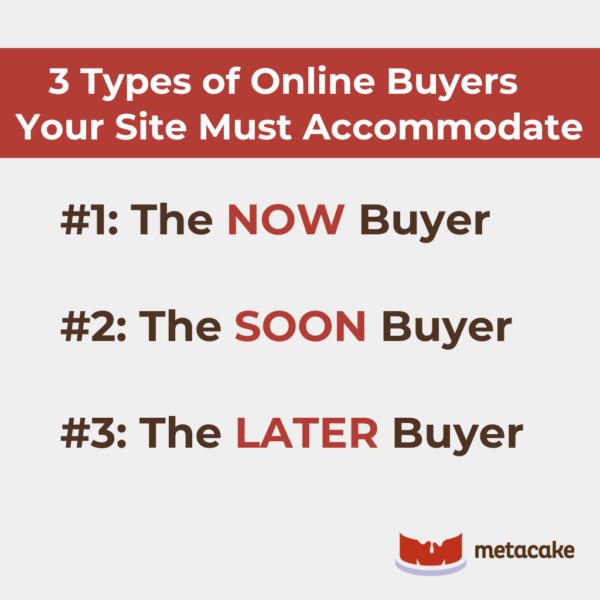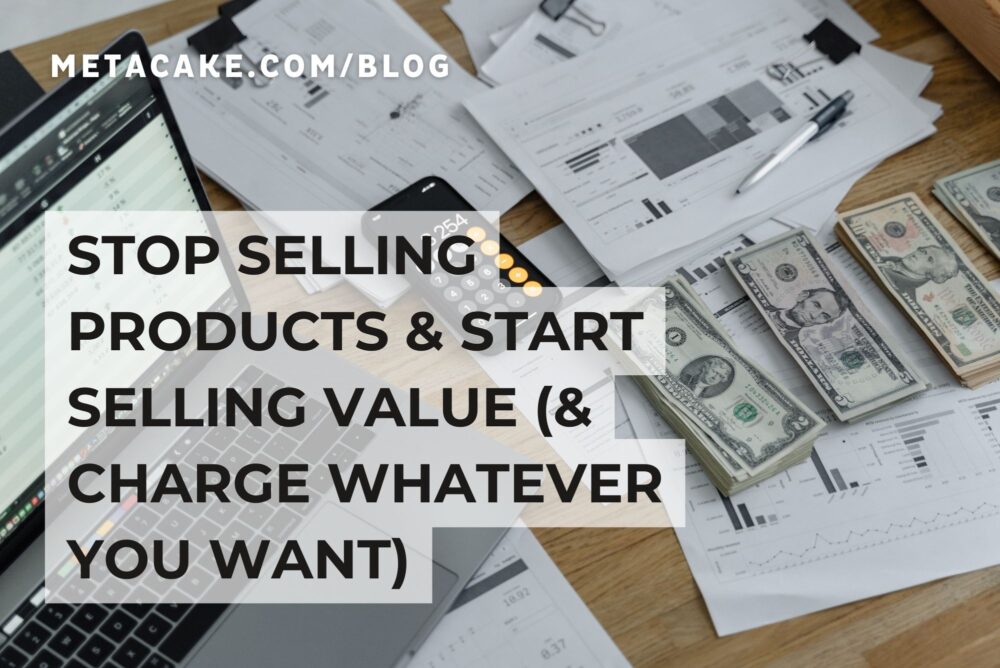
INCREASE SALES BY DESIGNING YOUR ECOMMERCE WEBSITE FOR THESE TYPES OF ONLINE SHOPPERS
If you designed your ecommerce site with one or two types of online shoppers in mind, you’re probably not getting great results. Why is that?
Outside of your target audience’s demographics, every ecommerce business has five basic types of online shoppers. Understanding and designing an experience that caters to each type will maximize your conversion rate and improve your sales.
In this post, we’ll explore two types of online shoppers, three types of online buyers (yes, there’s a difference), and how to design your ecommerce site to accommodate each.
The Difference Between Customer Avatars and Types of Online Shoppers
We always advise ecommerce brands to know their customers well and have their avatars dialed in. This helps you understand who you’re marketing to, how to communicate value to them, and what they need to make a purchase.
Even if you’ve determined who your customers are and their demographic information, there are still different types of online shoppers. Each has a different mindset when they shop. Maximize conversions by designing a site that accommodates each one.
Let’s unpack each type below.

The Two Types of Online Shoppers Your Site Must Accommodate
Everyone shops differently, but there are two basic types of online shoppers you must account for on your site:
Online Shopper Type #1: The Browser
This person doesn’t know exactly what they want yet. They need to learn about your products and brand and then be led through an experience that gets them to the right product. This must be done quickly before they get distracted and jump ship.
For this online shopper, you’ll need to balance facilitating browsing while getting them to the right place quickly. It’s also important not to overwhelm them.
To accommodate this type of online shopper:
- Create the perfect ecommerce homepage that teaches them about your product and directs them where to start shopping.
- Organize your navigation, product organization, category listing pages, and product pages in a clean, logical way.
Online Shopper Type #2: The Laser
This person knows exactly what they’re looking for. They may or may not know the exact product they need, but they came to your site for a reason. They’re more action-motivated than browsing-motivated, and hiccups will frustrate them.
To accommodate the laser type of online shopper:
- Make sure your search functionality works well.
- Keep your navigation clean and well-organized.
- Have easily scannable category listing pages with filtering and sorting options.
- Provide the right information needed to make a purchase decision on product detail pages, laid out well.
- Ensure your checkout process is quick and easy.

The 3 Types of Online Buyers Your Site Must Accommodate
The three buyer types correlate with the three stages of buying that customers walk through. Your site must be able to handle all three to avoid losing potential customers.
Online Buyer Type #1: The NOW Buyer
As the name suggests, this buyer is ready to buy now.
This doesn’t necessarily mean they’re also a laser shopper. They could be a browser, but the key is that they have a pain or a need they’ve decided to solve. Most “now” buyers aren’t concerned with price; they just want to feel confident they’ll get the desired result.
For the NOW type of online shopper, ensure your site experience is:
- Simple and easy to use
- Makes all the information needed to make a purchase decision very obvious
- Provides the right descriptions, features and benefits, answers to FAQs, and shipping and return policies
- Clarifies what steps are needed to piece together their order and checkout
Online Buyer Type #2: The SOON Buyer
This type of online shopper would like to buy something but lacks urgency. Without urgency, this person will be easily distracted and must be moved (by you) to purchase today.
To get the SOON type of online shopper over the line:
- Have your irresistible ecommerce offer dialed in (urgency, value stack, compelling price, trust-building elements).
- Limit distractions on your site as much as possible.
- Capture their email address early on (likely a homepage pop-up with an entry offer).
- Follow up with key email automation like a pre-purchase sequence and abandon cart sequence.
Online Buyer Type #3: The LATER Buyer
This type of online shopper isn’t ready to buy now. They may be planning for the future.
For the LATER type of online shopper:
- Adding pressure isn’t effective because the time isn’t right.
- The key is capturing a way to stay in contact with them (through an email pop-up).
- Have email content ready to educate them about your brand, create a relationship, and build trust.
- Use a great email strategy with a variety of interesting offers to help move them over the line.
If you stay in touch with compelling messaging, you’ll be top of mind when they’re ready to buy.
Create a More Effective Ecommerce Selling Experience for All Types of Online Shoppers
Understanding the two types of online shoppers and the three types of online buyers is critical for increasing purchases. If your website contains the elements each customer needs, your marketing will be significantly more effective.


